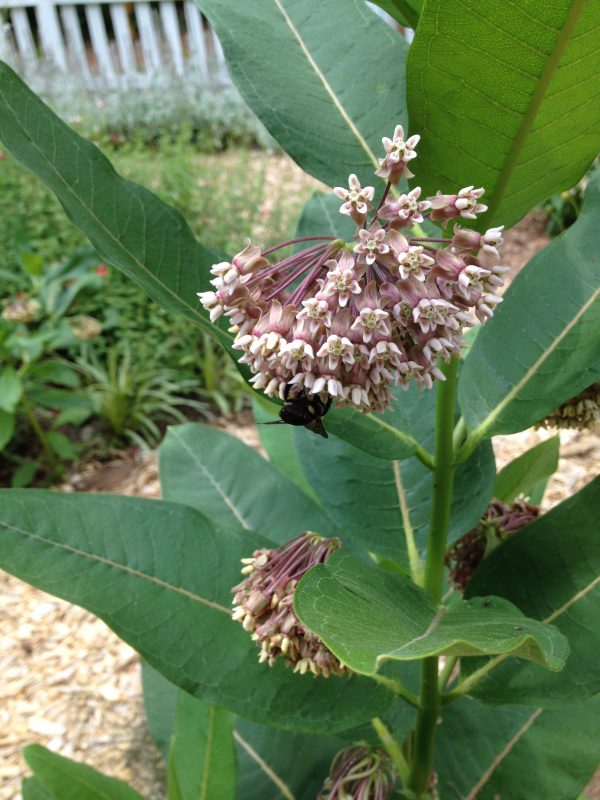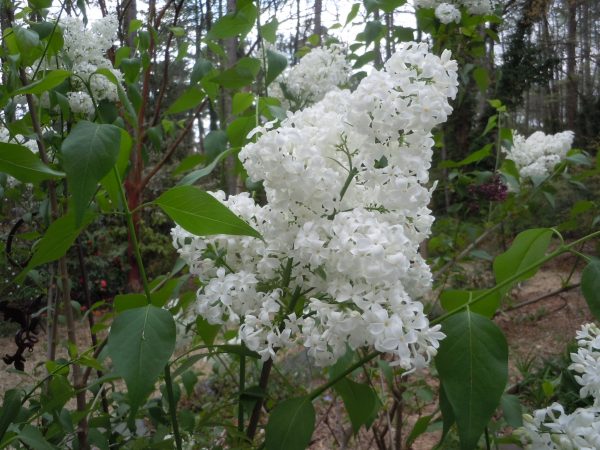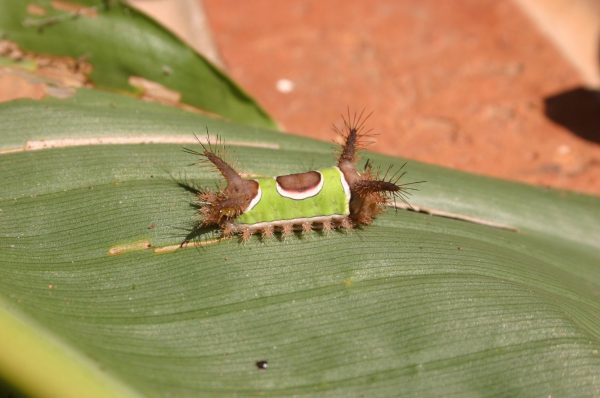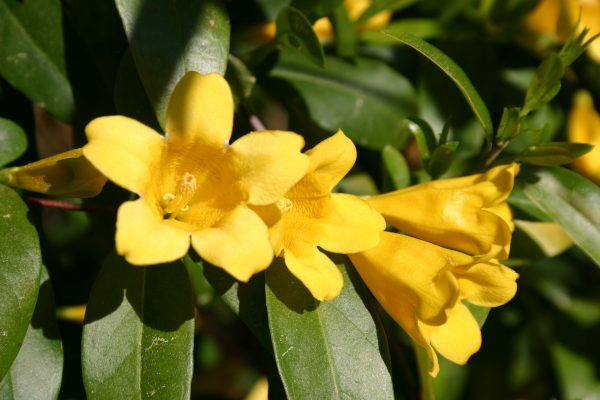Fescue – Diseases
Fescue lawns can withstand diseases if they are properly cared for. This includes fertilizing properly, mowing at the right height and watering when needed. It is better to control diseases by proper maintenance than by using fungicides.
There are four common diseases of fescue lawns:
PYTHIUM BLIGHT usually occurs in late spring when there are hot days, warm nights and plenty of rain. You may be able to see the white fungal growth at the edges of a dead patch of grass. It is most common on lawns which have had too much seed planted in the fall or spring. It is made worse by too much rain or irrigation. The crowded condition of the new seedlings allows the disease to wipe out large patches of lawns in a few days. Fertilizing heavily late in the spring causes lush growth for the fungus to grow on. Controlling pythium blight with fungicides is difficult. It is best controlled by attention to seeding and fertilizer rates.
BROWN PATCH is most prevalent on fescue fertilized in the summer when night temperatures are above 68 degrees. The dead patches may start small but can grow and join together to make patches more than 3 feet apart. To control it, do not fertilize fescue heavily in summer and if you irrigate, do it in early morning. There are lawn fungicides available to control brown patch. Read the label carefully and use the rate and timing that is indicated.
SLIME MOLD is a startling fungus. It looks like someone has poured oil over a tabletop sized area of the lawn. The fungus grows on the grass blades and will be gray before it turns black. Fortunately, the fungus does not attack the grass. It is ugly but it can simply be washed off with a garden hose. No fungicides are necessary.
DOLLAR SPOT occurs when nights are cool and days are warm. The spots of dead grass are about the size of your hand. It is associated with a lack of fertilizer and drought conditions. To control it, apply a moderate amount of fertilizer and irrigate deeply once per week. There are lawn fungicides available to control dollar spot. Read the label carefully and use the rate and timing that is indicated.
FUNGICIDES If you are absolutely sure you have a disease, the disease can be controlled with fungicides. Chlorothalonil (Daconil) and Bayleton (Fung-Away) are labeled for lawn disease control. Although they are effective, their cost may cause you to reconsider their use. To cure brown patch in a lawn requires an application of fungicide every 14 days. A lawn fungicide costs approximately $20 per 1000 square feet per application. For a typical 5,000 square foot lawn, that comes to $100 every two weeks. Let your pocketbook be your guide!
LAWN DISEASE ID
If you suspect that you may have a turfgrass disease, your sampling procedure is critical in order to get an accurate diagnosis. Go to the suspected disease area. Find where the live grass meets some dead grass. This is called the disease margin area. You need to cut a 4 X 4 inch square that has half dead grass and half live grass in it. Include the roots. Do not allow the sample to heat, do not allow the sample to dry out. Place in a paper bag or plastic bag which is not sealed. If you cannot bring the sample in the same day you cut it, it is best to refrigerate it. Take it to your local county Extension office. They would prefer to get the sample on Monday or Tuesday so that they can mail it to the plant disease lab without any delay in the mail. Results will be mailed to you in about 10 days.
Q:You wrote about soil testing a few weeks ago. Can I also have my soil tested for diseases? I have an area of fescue that always seems to die out.
A: It isn’t practical to test your soil for fungus – because we’d find every bad fungus you can name! The different fungi that cause plant diseases are spread throughout the environment. They usually infect plants when the plant becomes weakened or when other plants near a healthy plant become overwhelmed with disease. That’s the reason I always recommend that gardeners strengthen their plants first, before using a fungicide. The fescue might be dying because you spread seed too thickly or because it was watered too much or because the ground is just hard clay in that area. Once the environmental causes of disease are eliminated, a fungicide might be used to stop the spread of disease and protect healthy plants nearby.
Yellow patches in fescue lawns that were planted this fall are not signs of disease. The seedlings are yellow because cold temperatures stopped photosynthesis. A few warm days in mid-December will kick-start the growth process and the yellow patches will disappear.
If you have delayed applying the second round of fertilizer to fescue in late fall, try using a “fast release” lawn fertilizer like 16-4-8. The nutrients are water soluble and will be available to the grass after any rain.
Fescue seeded after October has germinated slowly. It will look fine by February; there is no need to add fertilizer above the normal rates.
You have brown patches of dead grass in your lawn. Is it the common lawn disease ‘brown patch’ or is it something else? The answer is important: if it is brown patch you probably need to spray with a fungicide. If is not, you’ll waste your money buying expensive fungicides.
DISEASE vs ENVIRONMENT While brown patch does cause patches of dead grass, other things can cause the same symptoms. If the area is poorly drained and water stands on a spot for more than 24 hours, the grass roots will rot, causing a dead patch. If you have a sodded lawn less than one year old, it is possible the soil underneath the sod was never plowed to relieve compaction. Where the sod has rooted poorly, brown patches will develop as dry weather sets in. If one part of the lawn was once used as a baseball home plate or a soccer goalie area, the earth beneath is almost as hard as concrete. It’s easy to see why green grass would turn brown there.
BROWN PATCH SYMPTOMS If you eliminate environmental causes of the brown patch, what are the true symptoms of the disease? True brown patch spots are small to begin with but in warm weather they can enlarge rapidly. Seen from above, the patch will look like a doughnut – a ring of tan grass having a patch of green grass in the center. Individual grass blades will be brown down to the crown – where the blade emerges from the ground – but the crown will be green. Early in the morning during hot, damp weather you might see a white fungal web at the edge of the dead grass patch.
KEEP GRASS HEALTHY Remember that the fungus that causes brown patch is constantly present. It can not be eliminated. Your grass gets sick because it is weak and becomes susceptible to the disease. You can help keep the grass strong by fertilizing only when the grass needs it: during the cool months for fescue and during the warm months for Bermuda grass.
WATERING Never water in the early evening. The best time to water is in early morning. Fescue is much more susceptible when it has lush, green growth plus warm nighttime temperatures. Warmth at night can not be avoided but lush growth can be moderated. The second step is to water at the right time. Since brown patch needs 14-16 hours of wet leaf surface to reproduce itself, water only after the dew has dried in the morning. An alternative is to water after nightfall. Since the grass is wet with dew anyway, watering in the dark does not unnecessarily extend the wet period.
Fertilizer applied in late spring and summer causes rapid growth (which must be mowed!) and drought stress. It is best to fertilize fescue only in fall, winter and spring. Dr. Lee Burpee, at the Griffin Experiment Station, reports that nitrogen fertilizer in June, July and August increased the severity of brown patch fungus on all cultivars tested except Kentucky 31 fescue. He also found that the disease was worse at mowing heights less than two inches and more that three inches. Fungicides to control brown patch are available but they must be applied regularly. To avoid the expense, consider changing cultural conditions before reaching for the fungicide.
Q: I had brown patch disease throughout my lawn this summer. Can I put anything in the soil to eliminate the disease?
A: A one word answer: “No”. The fungus spores of brown patch are in the soil all of the time. They can not be eliminated. You only have a problem with brown patch when the grass becomes susceptible to it – because of drought stress or over-fertilizing or over-watering. All three of those conditions are under your control. If you water deeply once each week during dry weather and avoid fertilizing after May, brown patch won’t be nearly the problem it has been.
OTHER CAUSES OF DEAD AREAS
There are other causes of damage to turfgrass which are sometimes mistaken for true turfgrass disease. It is important to distinguish between turfgrass disease and these other common causes of turfgrass death.
One common problem is damage from late spring frost. Often times algae is diagnosed as a disease when in fact it is a primitive, little plant. Watch for insect injury on lawns. This is often times diagnosed as a disease. Watch for fertilizer burn. Concentrated and organic fertilizers, if applied too heavily, can burn the grass and resemble a disease.
Make sure that the chemicals you use for insect, weed and disease control do not burn the lawn. This is called pesticide injury. Dog urine injury is often mistaken for disease damage.
Finally, watch for compacted soil. Compacted soils will thin the turf grass much like the disease will. Check to see how badly the soil is compacted.
BROWN PATCH – SPREAD BY MOWERS?
Q: My son has a neighborhood lawn mowing service. Could he be spreading the ‘brown patch’ fungus to our lawn on his mower blade? Should we be wiping the blade with alcohol each night?
A: Your question makes good sense to a logical brain but it turns out to have a less-than-obvious answer. My friend Taft Eaker runs the Plant Disease lab for the University of Georgia Extension Service. When I asked him if he thought mower disinfection was a good idea, he drew me a picture of a three-legged stool.
“The seat of the stool is the disease, brown patch,” he began. “The seat has to have three legs to support it. One leg is the host plant, the lawn grass. Another leg is the fungus spores; they’re present all of the time in the soil. The third leg is the environment around the lawn. If any of the three legs is not present, the stool falls and there is no disease.
“Two legs: the grass and the fungus, are permanently present. They can’t be changed. The third leg, the environment, can be changed in order to keep brown patch at bay in a given lawn. One good thing to do is to water deeply only once per week, in the morning. Another is to stop fertilizing fescue in May each year. The third, but most expensive, way to change the environment is to spray a fungicide on the grass so the brown patch spores can’t infect it.”
To sum it up, your son’s mower might be able to spread fungus in a lawn that had a favorable brown patch environment – but have no effect on the lawn next door that has a different environment. You don’t have to disinfect the mower. I would advise your son to take a three-legged stool with him to explain these concepts to his customers.













